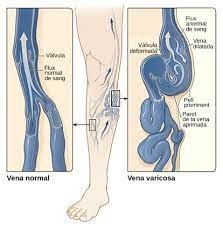Vein Ablation Procedure and What to Expect Afterwards
Vein ablation procedures reduce the symptoms of varicose veins, eliminate the need for repeated vein stripping, and can help avoid the need for more invasive treatment. Vein ablation procedures have been proven to have a good success rate.
Endovenous Ablation Procedure: This procedure uses a minimally invasive technique that is performed in an outpatient setting without any anesthesia or hospitalization. The procedure requires a vascular specialist to insert an infusion catheter into one of your veins and apply radiofrequency energy to destroy the veins.
Laser Ablation Procedure: Laser Ablation Procedure is a non-invasive, minimally-invasive procedure that uses a laser to vaporize the vein’s wall, resulting in no scarring and minimal damage to surrounding tissue. This treatment can be done quickly to help alleviate blood pressure.
Ablation is the process of destroying a vein and creating a new one. It is done via laser, radiofrequency or even cryoablation. Ablation is usually the only treatment option for lesions in the superficial veins of the lower extremities. After having your veins destroyed, you will be able to experience relief from a number of symptoms.
Varicose vein ablation is a procedure that destroys the veins in your legs by inserting a needle into them. It is indicated when there is venous insufficiency and these veins cause symptoms like swelling, pain, or discomfort. This procedure has been successful in treating many people with chronic venous problems such as superficial thrombophlebitis or painful swelling of the lower limbs due to congestive heart failure.
Varicose veins are a common condition that affects millions of people in India. This means people often turn to the procedure known as varicose vein ablation in order to relieve symptoms and improve their quality of life. There are many benefits to this procedure, including pain relief and improved lymphatic flow.
The process of endovenous radiofrequency ablation has been around for a long time, but it is still relatively new to the mainstream market. This technique heats and destroys a vein to eliminate it from the body.
The treatment has become more popular with its numerous benefits such as quick recovery, low complication rates and less post-procedure pain compared to that caused by a simple fracture.
Immediately after the procedure, there may be some swelling of extremities. Occasionally, bruising or numbness may occur in the extremities as well. Within three days after treatment, most patients experience relief from symptoms such as pain and heaviness in their legs.
What Are the Health Impact of a Vein Ablation?
A vein ablation is a procedure that is done to improve the blood and lymphatic flow in the body. It differs from a thrombectomy, which is a procedure that removes clots from veins. Thrombectomies are often performed when people have deep venous thrombosis, which can lead to pulmonary embolisms and stroke.
There are many health benefits of having your veins ablated, according to the American Society for Vascular Surgery. It can help people whose ankles swell during pregnancy or those who have swelling in their lower legs due to pregnancy or have hearing loss.
6 Ways You Can Help Your Body Deal with the Effects of a Vein Ablation
The veins in your legs, arms, or neck are being blocked. A vein ablation is a non-surgical procedure used to treat varicose veins or other vein blockages. Vein ablation can be done one of two ways: with radiofrequency energy (RF) or with laser energy.
Some people wonder if it’s possible to deal with the effects of a vein ablation without following a healthy diet plan. To answer this question, we have compiled six ways you can help your body deal with the effects of varicose veins and other vein blockages.
1) Exercise regularly
2) Drink lots of water
3) Try to avoid foods that are high in sodium and salt
4) Consume plenty of fruits and vegetables for fiber and antioxidants
5) Avoid sugar-filled foods like sodas, chocolate, pastry, etc.
6) Eat meals that are high in protein like meats or fish
What are the Predictions Around the Future of Venous Valves?
iliac valves are the most common type of venous valve. They are located between your femur and pelvis and have a double-S shape. These valves help in removing blood from the deep veins.
Let’s focus on what could be predicted for iliac valves in the near future. Firstly, there is a lot of research going into creating better, more effective iliac valves which may lead to less clots and deep veins thrombosis (DVTs) in the future. Secondly, there is an increase in use of minimally invasive technology which will be used to open up veins with minimal damage and pain iliac valve patients experience when they undergo surgery today (which could potentially reduce mortality rates).
https://drjathinsveincenter.com/peripheral-vascular-disease/



























